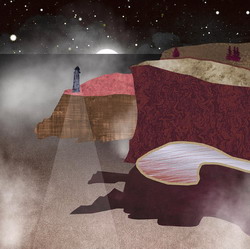U.S. Median Income Map Animation From 1985 – 2017
My geography based income reports are some of the more popular posts on my blog. People tend to identify with place, and let’s face it, maps are just plain cool. They reveal patterns and things unseen. Especially when they’re showing data over time.
A little while back I did a post that put a skeptical eye on the commonly held opinion that wages have stagnated as compared to the cost of living over recent times.
There were some really great comments on the post and it prompted me to want to look at the data further. So I decided to make an animated map of median household incomes as a percentage of the U.S. median household income by state in 5 year increments from 1985 – 2017.
I used a seven year increment for the last stage, skipping 2015 and using the 2107 data since it’s just been released.
So here you are, in an animated map that goes through the years in 5 year increments (*if the animation appears small on your tablet or mobile device it is clickable for a larger version):
The one thing that stands out the most to me is the difference between 2010 and 2017. The shift from greenish to reddish is noticeable.
Now remember, the biggest states and the ones that take up the most space on the map are also the ones that usually have much smaller populations. So visual cues like that, while interesting, might not be as relevant as you might think.
Especially since such a large portion of the overall population is concentrated in the brunch-belt of the Northeast (from Washington D.C. to Boston). The brunch belt stays a nice healthy green for the entire sequence.
The biggest variances in the time period:
- Washington D.C. had a 45% swing between low and high (89% in 1985, and 134% in 2017)
- Alaska had a 30% swing between low and high (117% in 2010, and 147% in 1985)
- New Hampshire had a 24% swing between low and high (112% in 1985 and 136% in 1990 – interesting, only 5 years in between)
- Wisconsin also had a 24% swing between high and low (96% in 2005 and 120% in 1995)
As I mentioned in the previous post, it did not surprise me that Washington D.C. has improved so much. It will continue to have rising salaries with no end in sight as gentrification continues.
The states with the least variance in the time period:
- Pennsylvania only swayed 5% for the entire sequence (96% in 2017, and 101% in 1995).
- Florida only swayed 7% during the period (86% in 2017, and 93% in 2000).
- Rhode Island also only swayed 7% (100% in 2000, and 107% in 2005)
Another interesting observation is only two states fell below the 70% marker, and only in 1985 and 1990. (Mississippi for both of those maps and West Virginia for 1985).
The pattern I find most interesting and that seems to have the wildest swings is Vermont. Vermont started off strong in 1985 and 1990 above the US Median, then went below it in 1995 and 2000.
Then it came back again in 2005 and went even higher in 2010. Only to have a hard crash in 2017.
I don’t know much about Vermont’s economy except that it has to be more than Ben & Jerry’s and small organic farms, but they’ve definitely had quite the ups and downs in their median income in the last 32 years.
I hope you enjoy this data analysis AF readers!











































I can definitely see why these types of posts do well because they really give a lot of data visually (and everyone is curious how the state they live in compares to the rest so they are inclined to click on it).
I am always happy to see my state do incredibly well in this series and know that this geoarbitrage that I accidentally found myself in has really helped me along the path to FIRE. If I was in a HCOL state I am not sure I could make much forward progress (Financial Samurai showed how a retired couple with a 5 million net worth is barely making ends meet in a recent post).
Yeah, the FS post was interesting, and the comments even more!
Your map posts are definitely among my favorites. They are just awesome, man. And each map tells a different story from poverty levels to income.
Keep up the cool work!
TPP
Thanks Doc!!
Always appreciate the visualization as something unique. Overall my location shifted from below to at average. However the nearby areas exceeded my state. I have a theory that my county level matches the surrounding states as the economy of Northern Delaware matches closest to southern Pennsylvania and Maryland then Southern Delaware. Is there county data available.
Thanks FTF. Yes, there is county data but the amount for work is substantially higher. Additionally country maps are hard to see without a zoom capability. And putting a zoom interface is a much harder thing to do technically.
I appreciate your comment!
California is oddly unwavering at a steady green. Seems sort of surprising with all the addition of Google and others. I suspect at the same time there are lots of low wage and no wage people here over that same time span love those averahe’s and statistics.
Yep, I think the increase of migrant workers, mostly in the valley doing agriculture for low wages, probably cancels out much of the Silicon Valley wealth.
Cool map. I like the visual. It looks like Oregon is close to median. We switched back and forth quite a bit between red and green.
Thanks Joe!
i grew up a mile from vermont. we even had a vermont zip code in my early years as they delivered our mail. it’s a funny place with hardly any real industry. no matter the wage i suspect that a family can keep the cost of living pretty low with lots of self sufficiency. lots of people i knew fixed their own cars and houses. even with all that they have some real problems with the opioid epidemic in some urban pockets where a bunch of resident junkies didn’t contribute to the economy.
the opioid epidemic has far reaches and is touching everywhere, really sad
I found it interesting how New York went from green to red to back to green again. Any guess why?
Also… I couldn’t help but notice there was a little correlation with this map and the blue/red state political party map, if you replaced blue for green. Although there would be some obvious outliers like Alaska. Not to make things political, it was just an interesting observation.
No clue on New York but with NYC and other cities it’s a complex economy. And yes, I did that too. It’s natural to look at same connections there. Obviously the wealthier, more urban regions are blue.
I love maps like this. It makes me want to correlate this data with other items. Can you tell why I love working with data and numbers? This correlates nicely with the cost of living in those areas relative to one another. The expensive areas have higher median incomes. Makes sense. I want to work in the green areas, and I do. I want to retire to the red ones, and I will.
That’s a great strategy and one I’m following as well. Near DC it seems virtually non one is from this area, they all come here for the high paying job and get out when they can.
This is so cool! Any reason why you did 5 year increments and not 1 year increments? If you did all the years I feel like r/dataisbeautiful might love your gif!
Thanks Olivia! When I looked at the data there wasn’t all that much change in year to year, so I just decided to do 5.
Minnesota – we’re all rich here, baby! It’s such a different world here vs. where I grew up in rust belt Michigan. Survive the harsh winter, be rewarded, I reckon.
You saw my take on the “harsh winter” on your blog today. 🙂
But I get it, I realize I’m a little weird in that way. To me there’s no bad weather, only bad clothing choices.
You are a keener for those statistics aren’t you 🙂 Another well done article crunching some numbers
Thanks, once a data dork always a data dork….
Love the maps! It’s interesting to see that Georgia has went down since 2000. I’d bet that the 2020 numbers would show an increase if the movie industry continues to grow here. Seems like everything is booming right now!
Wow, I didn’t know that. Thanks for the kudos!
Vermont is big on skiing as well 🙂 I’m from CT. Also, Maine is not surprising. When I go up to a lake there with family I always wonder what people actually do there for work. It’s really country!
I LOVE Maine, been there a bunch. I could possibly fully retire there. Finally summers without full-time sweating and mosquitos!